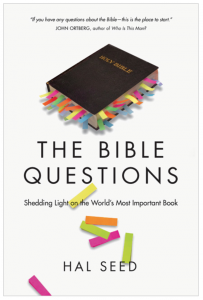 It was my grandmother who taught me how to tie my shoes. I was four years old. I don’t know why this memory has stayed with me all these years, but it’s still a vivid one.
It was my grandmother who taught me how to tie my shoes. I was four years old. I don’t know why this memory has stayed with me all these years, but it’s still a vivid one.
I didn’t want to learn to tie my shoes. I had two older sisters and a mother who would do it for me. Tying my shoes was complicated. It required concentration, and “fine motor skills.” What four year old boy wants to develop “fine motor skills”?
As far as I was concerned, I never needed those.
But one weekend while my parents were away, my grandmother shamed me into learning this ancient skill. “Your mother shouldn’t have to do this for you every day. You should learn to do this for yourself.”
“I don’t want to learn to do this for myself.”
“But once you learn, you won’t have to wait for anyone to come and help you. And you’ll be able to go outside whenever you want.”
I could think of a lot of excuses, but I knew she would eventually wear me down. So I relented. I learned to make the half-knot, and the little rabbit ear, then wrap the one around the other, pull it through, cinch it up, stand up and go play. Like you, this whole process is so natural to me now that I have to think seriously about it in order to even describe the steps involved.
A lot of Christians I know have this kind of attitude towards the Bible’s prophetic literature.
Prophetic literature can be complicated. It requires concentration. You might have to acquire a new skill in order to master it, so why bother? After all, there are enough other books of the Bible to read.
Reading the prophetic books of the Bible – that’s just hard, right?
Nope, it’s not hard. You just have to learn how to read the prophetic books.
Might as Well Relent
Eighteen of the Bible’s sixty-six books are prophetic literature. The final seventeen books of the Old Testament, and the book of Revelation in the New Testament. If you’re going to read everything God has written to you in the Bible, eventually you’re going to have to wade into these deep, rich, and sometimes confusing books.
Remember, All Scripture is God-breathed and useful… (2 Timothy 3:16).
Why They Are Hard to Understand
The prophets lived in a different times and cultures, with different figures of speech. Imagine someone 2,000 years from now trying to figure out what we mean when we say, “What’s Up?” Or “Text me.” We all know what 9/11 was. We know the Lakers, Chargers, and Padres.
But 2,000 years from now, people will need a commentary to decipher what we were talking about.
Yet the prophets spoke to people who had the same struggles with their families and enemies and finances, sin, and relationship to God that you have today. They spoke for the same God about the same world, offering timeless warnings and solutions that change your life, if you will take the time to understand them.
7 Steps to Understanding the Prophets
It takes seven steps to tie your shoe. Count ‘em if you don’t believe me. At some point you had to learn these steps. Once you did, it was worth it for the rest of your life.
Let me teach you to read prophecy in seven simple steps as well.
1. Get some background
The first step to reading any prophetic book is to get some background.
- Who wrote the book?
- Why?
- When?
- To whom?
- What were the problems they were facing?
- How is the book structured?
- What can I expect to learn from it?
To answer those questions, you can turn to one of four sources. If you’ve got a Study Bible, turn to the first page of whatever book you’re about to read and you’ll find great information there. (For Study Bible recommendations, see chapter 19 of The Bible Questions.)
A Bible Handbook will also give you this information. My favorite is Bruce Wilkinson’s Talk Thru the Bible. Gordon Fee’s How to Read the Bible Book by Book is also excellent. A Bible Dictionary can also give you background. As can a Bible Encyclopedia.
Your church library may have some of these resources. You can also find older versions of each of these online, for free. Once a copyright expires, the contents become public domain. Google “Bible Dictionary.” Or, explore Blueletterbible.com. Or, can get an App called, “Bible360” that has excellent Bible tools that come right on your phone.
Getting background is like looking through a book’s table of contents. It helps you understand what you’re about to read.
2. Pray for understanding
Whenever I open the Bible, I ask the Holy Spirit to speak to me. When God was trying to communicate with Samuel, Samuel prayed, “Speak Lord, your servant is listening” (1 Sam. 3:10). I usually say, “Lord, I’d like to hear from you just now. Please direct my thoughts.”
3. Read the passage
Tackle the first unit of thought.
Every time your Bible has a sub-heading, that’s where a unit of thought begins and end. If you’re reading Malachi, you immediately find out that the book is an “oracle” (Mal. 1:1). In paragraph 2 you’ll encounter your first question: Why would God love Jacob and hate Esau? In fact, is it really possible for God to hate anyone?
4. Consult a commentary
A commentary is a book written by an expert. There are three types of commentaries: exegetical, expositional, and devotional.
Exegetical commentaries focus on the grammar and language of the text. They’re usually academic, so they may over the head of first-time prophecy readers.
Expositional commentaries are usually written by pastors who have preached through the book. They have easy to follow outlines and illustrations.
Devotional commentaries focus more on reflection and application of the text.
You’ll figure out which you have in your hand almost immediately. BUT, your initial questions are pretty straight-forward. “What’s an oracle?” and “Why would God hate Esau?” All three types should give you an answer to this.
Like Bible dictionaries, your church library may have some, and older ones are available online if you’ll Google them. Blueletterbible.com has a bunch.
5. Make some observations
With the help of your commentary, you’re now ready to make some observations.
Answer the six question words (who, what, when, where, how, and why) and write down what you see. For more on this, read chapter 16 of The Bible Questions.
6. Develop some interpretations
An interpretation is a timeless principle. What is this prophet saying or teaching or warning against that is as true today as it was in his day? Write these down. (For more, consult chapter 17 of The Bible Questions.)
7. Apply the principles
Now that you’ve seen what God is saying to you, what are you going to do about it? Life transformation is the reason you read the Bible, so what will you do with what you’ve learned? The final step in tying your shoe is go out and play. Application is the go out and play step.
These are the seven steps. Tomorrow, repeat them through the second unit of thought in the book. Repeat them daily until you’ve finished. Then move to one of the history or poetry or epistolary books of the Bible for a change of pace before heading into your next prophet.
What’s Next?
 If you are interested in learning much more about reading the Bible, check out my book:
If you are interested in learning much more about reading the Bible, check out my book:
Further Reading
 Hal Seed is the founding and Lead Pastor of New Song Community Church in Oceanside, CA. He mentors pastors who want to lead healthy, growing churches with resources at www.pastormentor.com.
Hal Seed is the founding and Lead Pastor of New Song Community Church in Oceanside, CA. He mentors pastors who want to lead healthy, growing churches with resources at www.pastormentor.com.
Start Here to learn more about the resources available for you at PastorMentor.